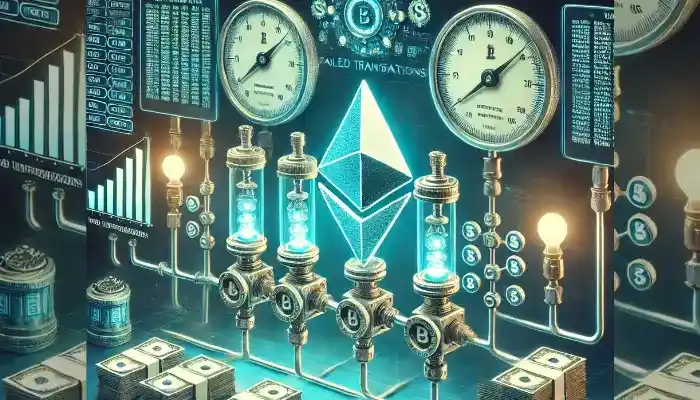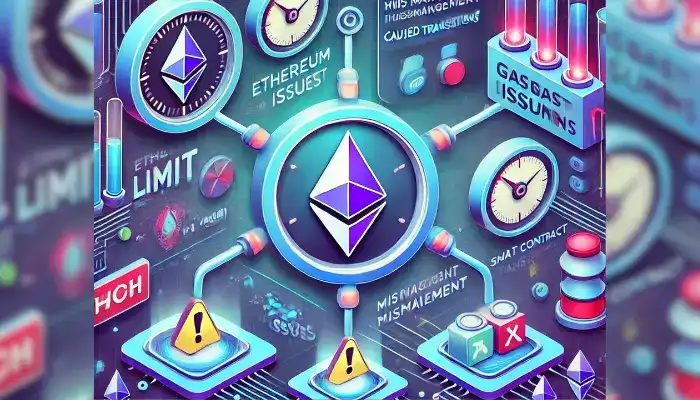One of the most popular and most used blockchain platforms is Ethereum. Ethereum provides us with several decentralized apps and smart contracts. However, there is one part of Ethereum which is called gas limit. Sometimes this gas limit causes issues for users. the issue that is occurring with the gas limit is because of mismanagement according to my experience with gas limit issues I face problems with gas limits like failed transactions, wasted fees, and unnecessary frustration. let’s discuss the Ethereum gas limit issue how it works and how to avoid common mistakes
What is Gas in Ethereum?
In Ethereum, gas is the fuel that powers the network. When you send ETH, interact with a smart contract, or use a dApp, you are asking the Ethereum network to perform computations to compensate for that work. You will have to pay a fee called a gas surcharge. This fee helps ensure the smooth functioning of the website. We can learn more about Ethereum Gas on Etherscan.
What is the Gas Limit?
The gas limit is one of the ways of limiting the cost of the transaction on the blockchain. This is the maximum amount of gas you’re willing to pay to get the job done—basically, your budget for the computing power you need to run your business. In the gas limit, you have to decide in advance how much you want to spend like we will advance pay at a parking garage. But if you set the gas limit too low, then your business won’t make it. if you set the gas limit too high then you could have to overpay. so set the balance right to avoid any circumstances.
How Gas Limit Mismanagement Causes Issues
According to my experiences on that issue, I found some Points that cause gas limit mismanagement issues these are the following points:-
1. If we Set up the Gas Limit Too Low
Assume you are trying to drive a car with half-tank gas, but the journey requires a full tank. So, the transaction does not have that much gas to finish because the gas limit is low. As a result, the transaction will fail, and the already-used gas is non-refundable. For example, a smart contract requires 50000 gas, but the transaction would stop and fail if the limit is less than the required amount.
2. If we Set up the Gas Limit Too High
The second point I found is setting up the gas limit too High. It does not cause any issue or failure but it can make your transaction inefficient. As you can get a refund for unused gas, Overrating can make your transaction more expensive especially when gas prices are high.
3. One cause should be Network Congestion and Low Gas Prices
At the busy time of the Ethereum network, if the gas limit or gas price is too low, the miners can also skip your transaction as compared to others that offer higher fees. Now there are two cases first is this can leave your transaction stuck in the pending state or even the transaction fail
4. The last cause I found is Complex Smart Contracts
Certain smart contracts demand more gas than straightforward transactions due to their complexity, involving multiple steps or calculations. If you underestimate the gas limit for a complex contract, it can fail.

Tips to Avoid Gas Limit Issues
1. If we Use Gas Estimation Tools
According to my research, there are many Ethereum wallets, like MetaMask, have built-in tools to predict that how much gas is required for a transaction. Always use these tools to set a gas limit. Explore MetaMask Documentation for guidance.
2. Learn about the Transaction’s Complexity
Some basic transactions, like sending ETH, require less gas. However, movements when interacting with dApps or running smart contracts can be more demanding or stressful. Look into a way to set the correct gas limit in your smart contracts. Visit Ethereum Developer Resources for detailed insights.
3. Check Network Conditions
My next tip to avoid the gas limit issue is to check the current gas prices and network traffic Before confirming a transaction. There are Websites like Etherscan or Gas Now that show real-time gas price data to help you make an Up-to-date decision.
4. Add a Safety Buffer
To avoid gas limit issues we also ensure that For complex operations, keep in mind to add a bit extra fuel on your limit as a protection net. This ensures your transaction can take care of sudden computational costs
5. Use Layer 2 Solutions
After that we can also use Layer 2 systems like Arbitrum or Optimism offer decreased expenses and quicker transactions, reducing the chance of failed transactions because of gas issues.
6. Regularly Update Your Knowledge
The Ethereum network evolves quickly. So Stay tuned about updates or changes that might affect gas prices and limits by following the Ethereum Blog.
Conclusion
Last but not least, The gas limit is an essential part of making transactions on Ethereum, but mismanaging it can result in Ethereum gas limit issues failed attempts, wasted funds, and frustration. By the knowledge of how fuel works, the usage of estimation tools, and preparing for network conditions, you may avoid these Challenges. A little care and interest a long way in ensuring smooth and fee-effective transactions on Ethereum. With these hints, you’ll navigate the blockchain like a pro!
Related Posts:-
Smart Contract Vulnerabilities: How Simple Errors Cause Millions in Losses Solana Congestion Problem: Fixing the Network That Stopped Working
More Posts on Bugs and Fixes Checkout the category Bugs and Fixes


Your article helped me a lot, is there any more related content? Thanks!